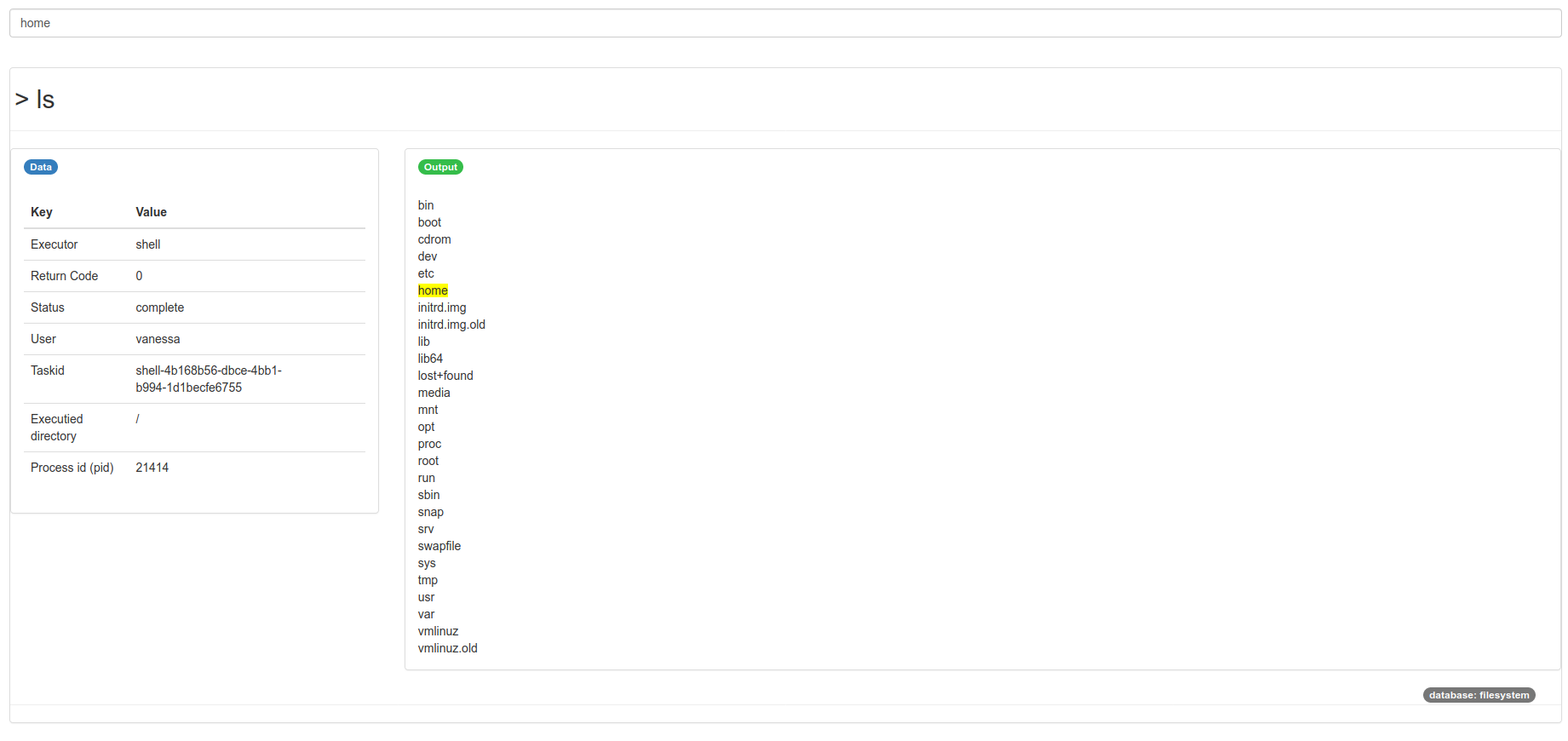You should first install qme.
This will place the executable qme in your bin folder, which is the client
for running tasks, starting the interface, or otherwise interacting with your queue.
Getting Started
Introduction
- How does it work?: How does qme work?
- Concepts: What are common qme concepts?
Setup
- Configuration your qme install, for example, choosing a database backend.
- Environment variables can be set to control functionality.
Usage
- Commands including run, re-run, list (ls), get, and others.
- Executors are parsers for the commands that you run to create tasks.
- Dashboard to better interact with and manage your tasks.
- Actions are defined per executors, and can be called from command line or sometimes interface.
- Python: an example of running an action from a Python terminal.
- Containers including Docker, or more likely important, Singularity.
- API the dashboard also exposes an application programming interface for your tasks
How does it work?
As we’ve mentioned, QueueMe (or on the command line, qme) is a jobs queue and dashboard generation tool that can be used to specify executors (entities that run jobs) and actions for them. You can use qme only on the command line, or if desired, via an interactive web dashboard. The basic workflow of QueueMe looks something like this:
+-------+
| |
+-->+ shell |
| | |
| +-------+ +--> qme clear...
| |
+-------------------+ +----------+ | +-------+ +------------+ +--> qme get...
| | | | | | | | | |
| qme run command +--->+ executor +------->+ slurm |--->| database +---+--> qme ls...
| | | | | | | | | |
+-------------------+ +----------+ | +-------+ +------------+ +--> qme rerun...
| . |
| . +--> qme search...
| +-------+ |
| | | +--> qme start...
+-->+ other |
| |
+-------+
In the above diagram, we start with a qme run command, and it get’s parsed by a particular executor (e.g., slurm, shell, or other). The executor interacts with our database of choice (filesystem, sqlite, mysql, or postgres) to save custom metadata for the command (e.g, output, error, return code, present working directory, etc. for shell). The user can then query qme to get, list, re-run, or clear a set of tasks or a particular task result, or generally list all tasks or open an interactive web interface to do the same.
The dashboard will show a table of results:

where you can click one to see it’s executor-specific web interface (for example, a shell executor is optimized to show output, error, metadata, and the command at the top:

and then makes it easy search output. A search box at the top will highlight results in yellow that match the user search:

The interface pages are automatically updated (without refreshing the page) by way of using web sockets, along with Vue.js and Flask.
Concepts
The following concepts might not be specific to qme, but are defined as the following in the context of qme:
executor
You can think of an executor as the controller that will handle parsing of a command line (terminal) command, and ensuring that:
- appropriate metadata is collected
- the command is run
- relevant actions are exposed
dashboard
Is a Flask application that comes with qme, exposed via qme start, that provides
an table to manage and otherwise interact with tasks.
database
A database is the backend database used by QME to store your tasks. The default (and dummy) database is the filesystem, which is good if you want to briefly test out QueueMe but not use extensively. For most use cases, sqlite is recommended as it supports display or more information and easier search. You can easily install the sqlachemy database dependency and then specify using sqlite for your configuration by doing the following:
$ pip install -e .[all] # local install from repository
$ pip install -e qme[all] # install from pypi
$ qme config --database sqlite
Licenses
This code is licensed under the Mozilla, version 2.0 or later LICENSE.
You might next want to browse tutorials available.
